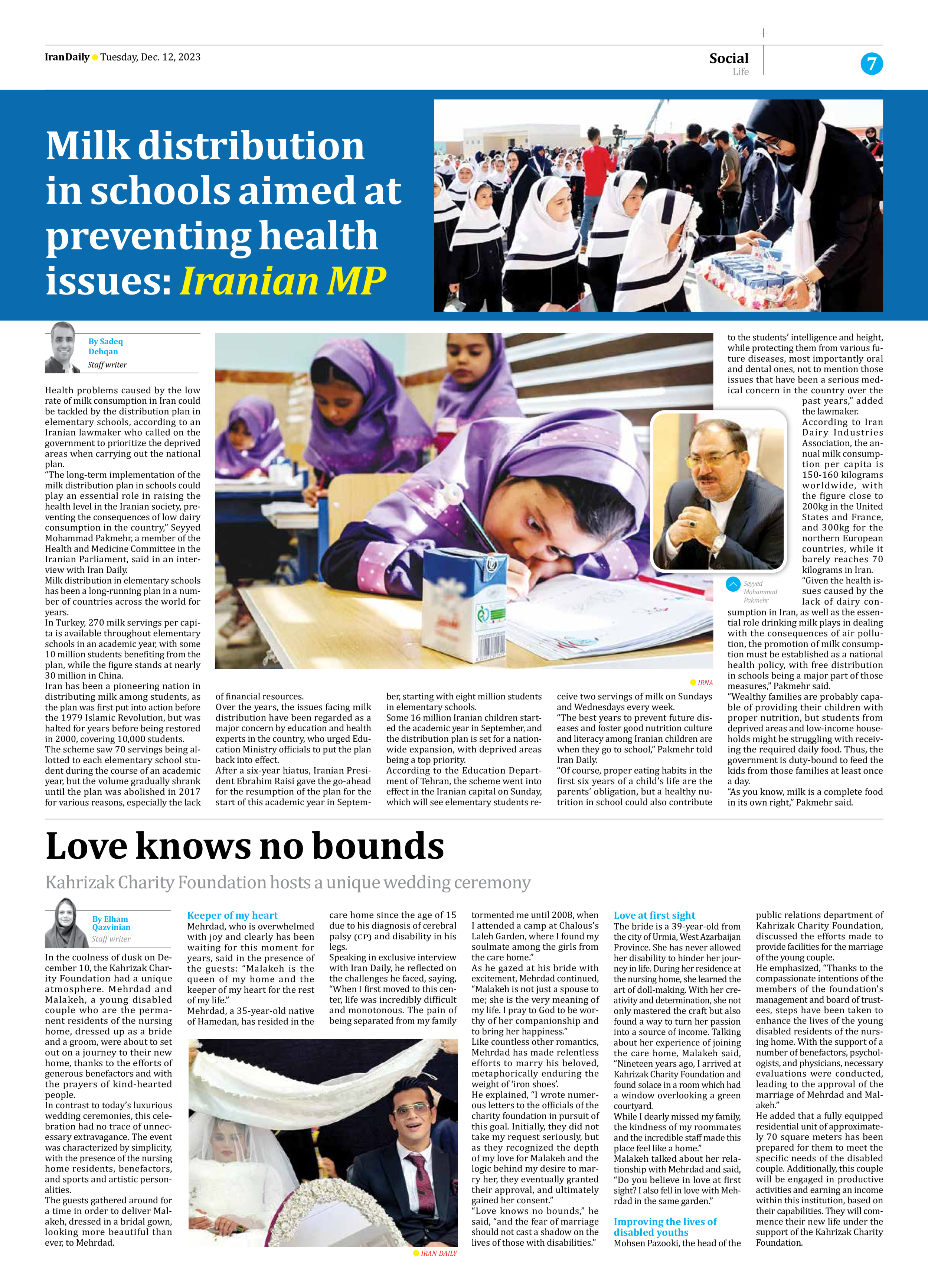
Milk distribution in schools aimed at preventing health issues: Iranian MP
By Sadeq Dehqan
Staff writer
Health problems caused by the low rate of milk consumption in Iran could be tackled by the distribution plan in elementary schools, according to an Iranian lawmaker who called on the government to prioritize the deprived areas when carrying out the national plan.
“The long-term implementation of the milk distribution plan in schools could play an essential role in raising the health level in the Iranian society, preventing the consequences of low dairy consumption in the country,” Seyyed Mohammad Pakmehr, a member of the Health and Medicine Committee in the Iranian Parliament, said in an interview with Iran Daily.
Milk distribution in elementary schools has been a long-running plan in a number of countries across the world for years.
In Turkey, 270 milk servings per capita is available throughout elementary schools in an academic year, with some 10 million students benefiting from the plan, while the figure stands at nearly 30 million in China.
Iran has been a pioneering nation in distributing milk among students, as the plan was first put into action before the 1979 Islamic Revolution, but was halted for years before being restored in 2000, covering 10,000 students.
The scheme saw 70 servings being allotted to each elementary school student during the course of an academic year, but the volume gradually shrank until the plan was abolished in 2017 for various reasons, especially the lack of financial resources.
Over the years, the issues facing milk distribution have been regarded as a major concern by education and health experts in the country, who urged Education Ministry officials to put the plan back into effect.
After a six-year hiatus, Iranian President Ebrahim Raisi gave the go-ahead for the resumption of the plan for the start of this academic year in September, starting with eight million students in elementary schools.
Some 16 million Iranian children started the academic year in September, and the distribution plan is set for a nationwide expansion, with deprived areas being a top priority.
According to the Education Department of Tehran, the scheme went into effect in the Iranian capital on Sunday, which will see elementary students receive two servings of milk on Sundays and Wednesdays every week.
“The best years to prevent future diseases and foster good nutrition culture and literacy among Iranian children are when they go to school,” Pakmehr told Iran Daily.
“Of course, proper eating habits in the first six years of a child’s life are the parents’ obligation, but a healthy nutrition in school could also contribute to the students’ intelligence and height, while protecting them from various future diseases, most importantly oral and dental ones, not to mention those issues that have been a serious medical concern in the country over the past years,” added the lawmaker.
According to Iran Dairy Industries Association, the annual milk consumption per capita is 150-160 kilograms worldwide, with the figure close to 200kg in the United States and France, and 300kg for the northern European countries, while it barely reaches 70 kilograms in Iran.
“Given the health issues caused by the lack of dairy consumption in Iran, as well as the essential role drinking milk plays in dealing with the consequences of air pollution, the promotion of milk consumption must be established as a national health policy, with free distribution in schools being a major part of those measures,” Pakmehr said.
“Wealthy families are probably capable of providing their children with proper nutrition, but students from deprived areas and low-income households might be struggling with receiving the required daily food. Thus, the government is duty-bound to feed the kids from those families at least once a day.
“As you know, milk is a complete food in its own right,” Pakmehr said.







